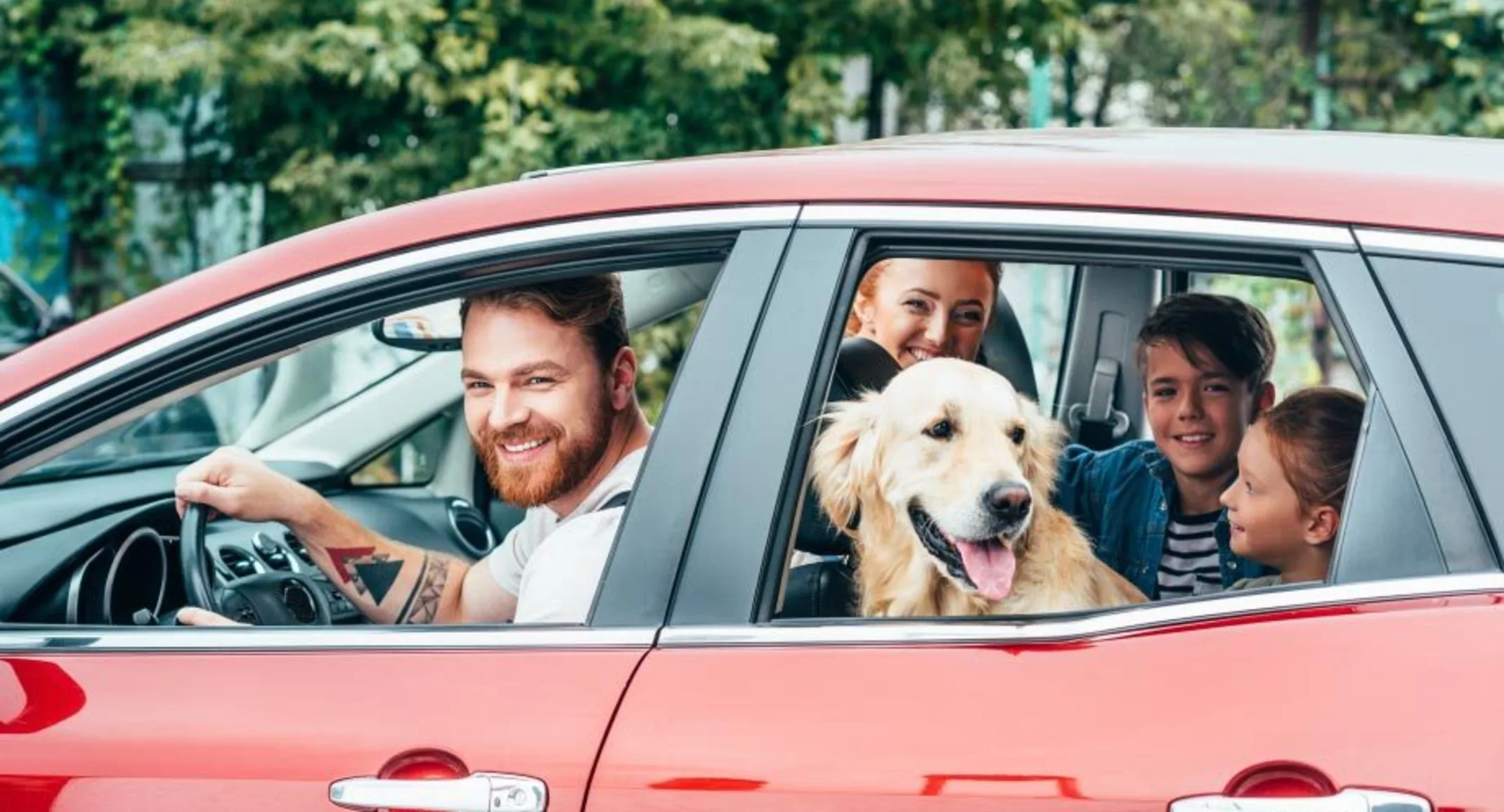Buckle Up Your Pet
General

Here’s something interesting off the news wire this morning: Democrat Assemblywoman, L. Grace Spencer of New Jersey, has proposed state legislation requiring pet owners to ‘buckle up’ their pets in cars — or risk a $20 fine, and possibly an animal cruelty charge.
The response?
45% of New Jerseyans support the proposed legislation. Governor Christie just calls it stupid, leaving no doubt about his position on the matter.
More Democrats support the legislation than Republicans.
48% of non-dog owners support the legislation
38% of dog owners support the legislation.
But fascinating political and social implications aside, let’s discuss the real issue here — safety.
Are dogs in cars safe?
I’m still trying to clarify my own position on the matter. As a pet owner who drives to work with two dogs unrestrained in the back of my station wagon, it hits very close to home. So the way I see it right now, there are two equally important components to the issue:
The safety of the pet.
The safety of the general public.
As a veterinarian, I am acutely aware of the potential for significant injuries to an unrestrained pet in an automobile accident. Oddly enough, I’ve only ever seen two dogs injured in an accident: two little poodles in the same car. My practice partner has only ever seen one, a greyhound.
In the case of the poodles, the accident was fairly serious because the owner was in the hospital same time the poodles were at the emergency vet. Sadly, both dogs suffered severe spinal trauma which resulted in their deaths. The greyhound my partner treated suffered a cervical disc injury and was treated at Angel Memorial. So, from my limited experience, I’d have to agree the dogs may have fared better had they all been restrained in some fashion.
Human hazards vs dog hazards
Car seats and seat belts are designed for humans after extensive crash testing. There are special baby seats and booster seats designed just for children based on weight and height. How much testing of equipment would need to be done for dogs with a weight range of 1 pound to 200 pounds before recommendations could be made about the most effective method to restrain a dog in a car seat? It boggles the mind.
And if air bags are potentially hazardous to small children (legally, little ones aren’t even allowed to ride in the front seat of a car), an airbag deploying in front of 10-pound Fluffy would be akin to a bomb going off in your beloved pet’s face.
Pet carriers and pet seat belt harnesses
Seat belt harnesses are commercially available for the ‘average-sized’ dog, and I have a few clients who use them. They seem like a sensible idea: at the very least in a collision, they might keep a dog from flying into the dashboard. For smaller dogs, riding in a buckled-in pet carrier would offer some measure of protection but no guarantee the dog would be safe.
Depending on where you live, dogs riding in the back of pick-up trucks are a common sight. Many states have laws requiring the pets be ‘cross-tied’ but that’s just to prevent them from jumping out. In an accident, it’s easy to imagine the cross-tie being as dangerous as a hangman’s noose.
Clearly there is no easy answer to this issue.
So what about the safety of the general public?
I can tell you I’ve heard many more stories of unrestrained pets becoming a hazard in a vehicle than of them being injured. Consider this: even if you’re being a good citizen traveling within the suburban speed limit, and you have an accident, your unrestrained 60-pound dog could slam into a car seat, windshield, or passenger with an impact of something like 2,700 pounds!
An unrestrained pet could be dangerous in other ways, too.
Cats in Cars – Please use a cat carrier
Cats generally don’t like car rides. They’ll scramble around the interior looking for a place to hide, causing a huge distraction. And then if they choose a hiding place under your brake pedal, you’ll be in a heap of trouble when it comes time to stop. Once, a client of mine had to have a mechanic take apart their entire dashboard to get their cat out. (Come to think of it, I knew the owner of a large snake who had the same experience.) Put Whiskers in a cat carrier; you’ll all be much safer and happier.
Riding in Cars with Dogs
Some dogs are perfectly content to sit in one spot, head out the window, enjoying the breeze. Others bounce from window to window like a squirrel with ADD. And then how many times have you seen a driver with a huge dog in their lap? That absolutely affects one’s ability to safely handle a vehicle. Which means it absolutely affects all other drivers around you. Even a small dog out of a pet carrier can be as much of a distraction as a cell phone.
We need to operate with common sense, and match the level of restraint with the pet. I don’t think we need another law to regulate this because there are suitable laws already in place. Try driving across town with a bunch of balloons in your lap and see what the police officer has to say about that. I believe it’s known as Operating a motor vehicle in an unsafe manner. If that was enforced for unsafe pets, I believe it would achieve much of what Assemblywoman L. Grace Spencer is seeking to implement.
As pet owners, we have a responsibility to keep our pets safe.
As drivers, we have a responsibility to all the other drivers on the road.
The best way we can keep our pet passengers safe is not allow them to be a distraction or hazard while we’re driving. A pet carrier or pet seat belt may or may not help prevent injuries in an accident but they will keep your pet from creating a situation in your car that causes you to drive less safely.
~ Dr. Randy Eisel
